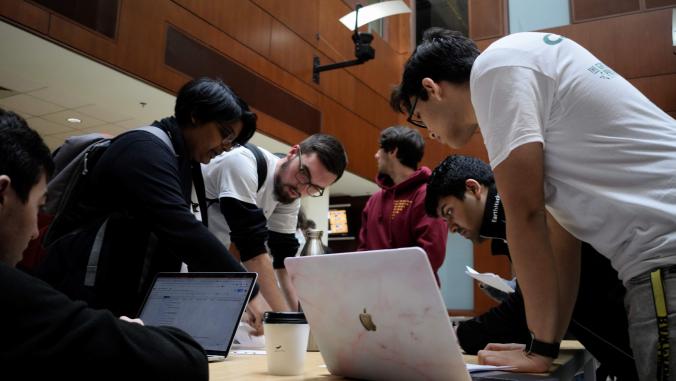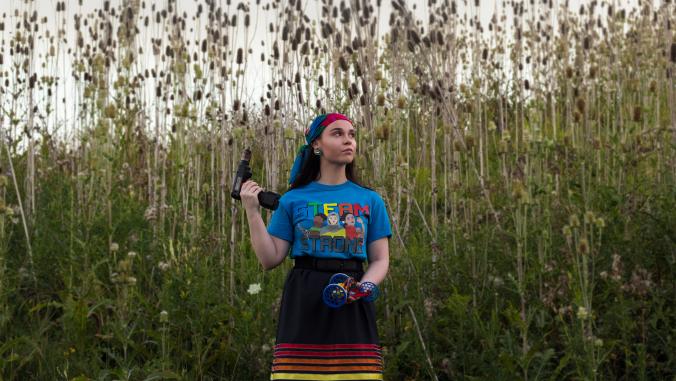Sustainable innovation, minus the sticker shock?
A new roundup of 100 top green innovations spotlights a shift away from premium-priced sustainability solutions toward products and projects with bigger potential.

What do solar-powered hearing aids, a subscription service for baby clothes and mobile technology for farmers in East Africa all have in common?
For one, they are each finalists in this year’s Sustainia100, an annual study of the top 100 sustainability innovations, published today. Solutions that claimed a spot on the list in 2015 were selected from a pool of more than 1,500 projects and businesses from across six continents and 151 countries.
Those recognized also demonstrate an important and exciting new development: that sustainability alternatives are increasingly becoming the more affordable and convenient choice.
“By creatively replacing ownership with access and reusing material in smarter ways, we are now seeing products and services highly competitive with non-sustainable alternatives,” Laura Storm, CEO of Sustainia, the think tank behind the study, explained. “This empowers businesses, communities and consumers with easy access to new sustainable opportunities.”
The cases detailed in this year’s Sustainia100 point to a paradigm shift in sustainable innovation that suggests we may be nearing a tipping point away from premium-priced solutions to sustainability challenges. More than half of the selected innovations in 2015 are competing not only on sustainability criteria, but more than ever before on affordability and accessibility, too.

The increasing competitiveness found among this year’s leading sustainability innovations is especially seen in circular economy innovations and new business models for underserved markets.
One in five of this year’s featured innovations are based on circular economy models, demonstrating economic value from products that boast repeated use or recycling. These range from turning food waste into biofuel, reusing air-con filters and recycling 100 percent of materials using new approaches to textile production.
Vigga (Danish), a Danish startup that provides a subscription service to lease organic children’s wear through a circular model, is one example in the field. For a monthly fee, parents receive and then can return clothing for bigger sizes as the child grows — saving time, money and resources. Vigga is saving parents up to $2,100 in the first year of their baby’s life — not to mention eliminating manufacturers’ need to produce a lot more clothes (even if they’re small).
Small is bountiful
Additionally, the rising focus on underserved markets, especially in developing countries, is beginning to create sustainable business models.
With a large portion of the world’s population living on $8 per day or less, a demographic group sometimes collectively referred to as “the base of the pyramid,” this represents an enormous global market.
Nearly a fourth — 23 of 100 — of the innovations are making a profit or providing affordable solutions that directly address the need for reliable energy, sanitation and waste management at the base of the pyramid.
The Agriculture and Climate Risk Enterprise (ACRE), for example, is making use of automated weather stations, satellite data and mobile technologies to bring affordable crop insurance to smallholder farmers in East Africa. This technology makes it possible to reach thousands of remote farmers without amassing high transaction or delivery costs.
The partners behind Sustainia100 are UN Global Compact, Connect4 Climate, Regions20, WWF, DNV GL, Realdania, Storebrand and International Federation for Housing and Planning.
By identifying 100 readily available innovations for cities, corporations and consumers, these organizations collectively are striving to highlight the potential for bottom-up transformation ahead of the much-anticipated climate change negotiations, COP21, in Paris this December.
A related coalition also released a report earlier this year on how to translate daunting sustainability challenges, such as unsustainable urbanization and lagging fresh water supplies, into market opportunities.
Even so, former California governor Arnold Schwarzenegger, honorary chair of Sustainia, has it right: “This year’s Sustainia100 are fantastic, because they show how practical and affordable sustainable alternatives are for everyone … demonstrating that none of us should wait for our governments to solve big challenges.”





